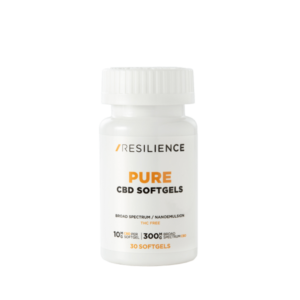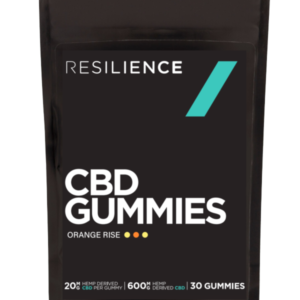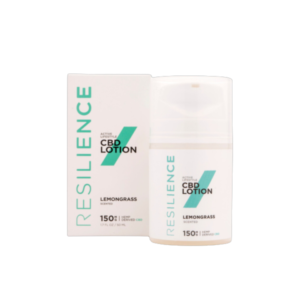
How Resilience CBD Can Help Your Dog Climb Steps
Your dog can no longer romp in the park, go on a hike, or even take a long walk. In fact, your dog is not sleeping in the bedroom upstairs because climbing the stairs is a struggle.
This is arthritis at work.
Consider this: one in five dogs will suffer from arthritis.
What can help alleviate the pain and inflammation of arthritis? CBD, a known anti-inflammatory, has the potential to help.
ABOUT ARTHRITIS AND JOINT PAIN
There have been changes in any number of joints – the place where two bones meet; changes that comes from:
- tissues being destroyed due to infection,
- congenital defects that have affected body structure,
- trauma or injury resulting from over- or misuse.
All or any of these can cause deterioration. Sometimes, too, the body’s immune system can work against itself – with rheumatoid arthritis, for example – and cause inflammation and degeneration of tissue.
Scroll down or jump ahead to:
YOUR ENDOCANNABINOID SYSTEM (ECS)
HOW CBD MIGHT HELP
CBD MAY AFFECT JOINT PAIN AND INFLAMMATION
DECREASING JOINT PAIN
WHAT IS OSTEOARTHRITIS?
WHAT ABOUT HIP DYSPLASIA?
A VICIOUS CYCLE
IS IT ARTHRITIS?
MEDICATIONS
NOT FOR DOGS
TIMING IS IMPORTANT
MANAGING ARTHRITIS
TRIKOS SUPPLEMENTS LOVES YOUR DOG
YOUR ENDOCANNABINOID SYSTEM (ECS)
It was not that long ago that the Endocannabinoid System (ECS) and its vital role in regaining internal balance and staying healthy was discovered.
This system exists within the body, making endocannabinoids, while cannabis-derived cannabinoids like CBD are phyto-cannabinoids that successfully mimic the endocannabinoids made by the body.
- The ECS is made up of enzymes – proteins that act within cells as catalysts.
- The enzymes regulate:
- the biosynthesis, transport, and metabolic breakdown of endogenous cannabinoids;
- cannabinoid receptors;
- and endocannabinoid ligands that activate receptors, the two best known of these being anandamide and 2-AG.
- Cannabinoid receptors, found throughout the body, include the CB1 receptor and the CB2 receptor, a peripheral cannabinoid receptor.
- CB1 receptors are found all over the body, but the majority are in the brain – in the cortex, basal ganglia, hippocampus, and cerebellum. When you think of muscle spasms, insomnia, or chronic pain, think of the CB1 cannabinoid receptor. They are all about movement and coordination, feelings – both emotional and physical. Want to increase appetite? That is the CB1 receptor, as well.
- CB2 cannabinoid receptors, in charge of inflammation and pain, are found in immune system tissue as well as in parts of the vascular system, and microglia. Microglial cells work in the central nervous system moderating immune responses. These cells (like white blood cells moving through the body) get rid of cellular waste and dead neurons.
Receptors, transmitters, and enzymes regulate our bodies, keeping them in homeostasis – balance. The ECS regulates many bodily functions including:
- our immune system
- allergic reactions
- anxiety levels
- digestive health
- and even our metabolism.
It may seem too magical to be true, but current research continues to back up anecdotal evidence that the ECS stabilizes the body.
HOW CBD MIGHT HELP
Phyto-cannabinoids like CBD work with ECS receptors throughout the body by:
- attaching to each specialized receptor
- prompting the receptor to produce the necessary endocannabinoid
- playing a role in inhibiting the breakup of anandamide.
Anandamide works with the CB1 receptor. In Sanskrit, Ananda means bliss or joy. When rigorous exercise increases the level of anandamide in the body, there is an experience of bliss and that euphoric feeling that strenuous exercise brings.
- Anandamide is one of the two most common endocannabinoids our body produces.
- The other endocannabinoid, 2-AG (2-Arachidonoylglycerol), is present in concentrations of up to 170 times that of anandamide.
- They share many of the same functions, but 2-AG may interact with both the CB 1 and CB2 receptors and is particularly important to the immune system.
CBD, by stopping the degradation of anandamide, helps to keep this feeling going. Not too much and not too little, but just the right amount to ensure a good mood and a sharp brain, little inflammation or pain and a good appetite.
Together, anandamide and 2-AG help the body to keep in balance. They are important for:
- memory,
- neuroprotection
- cardiovascular health
- modulating pain
- metabolism
- bone health, including joint health
- fertility
- immune function.
CBD MAY AFFECT JOINT PAIN AND INFLAMMATION
Anecdotal stories abound, but more scientifically backed research is needed. This research is underway on many fronts, leading to a greater understanding of how endocannabinoids as well as phyto-cannabinoids like CBD work. At this point, researchers seem certain that the CB2 receptor helps the immune system to manage pain, including joint pain, and inflammation.
- In one study on mice, CBD was given as soon as symptoms were noted and the treatment “effectively blocked progression of arthritis,” whether it was administered i.p. (intraperitoneal injection into the body cavity) or orally. “Clinical improvement was associated with protection of the joints against severe damage…Taken together, these data show that CBD, through its combined immunosuppressive and anti-inflammatory actions” has a potentially potent anti-arthritic effect in CIA (collagen-induced arthritis).
- In another study, a placebo did not produce the same level of improvement that a cannabinoid did. This may indicate that:
- pain both with movement and when at rest might be alleviated by phyto-cannabinoids.
- that sleep quality may be improved as pain often causes dogs and people to awaken, leading to interrupted sleep.
DECREASING JOINT PAIN
Managing a dog’s pain is key to maintaining its quality of life. Last year, Cornell University, published a study in Frontiers in Veterinary Science which assessed the safety, clinical efficacy, and pharmacokinetics of CBD in osteoarthritic dogs.
Pharmacokinetics: the process of absorption, distribution, metabolism, and excretion of a drug.
The administration of 2 mg/kg of CBD oil twice daily seemed to indicate that it might safely decrease pain and increase activity in OA-afflicted canines.
These studies speak to the results, while other studies seek to understand how CBD might help with pain and inflammation.
WHAT IS OSTEOARTHRITIS?
Although there are many types of arthritis, the most common is osteoarthritis, called degenerative joint disease. We and our dogs have knee, hip, and other bone joints that are cushioned with cartilage so that we feel comfortable when we move.
- Both smooth, surface cartilage and menisci cartilage are made of connective tissue that provides shock absorption and offers flexible support.
- Cartilage together with synovial fluid – the viscous, egg-white like fluid that lessons friction between cartilage and joint – allows our bodies to move every which way without pain.
Then a terrible thing happens. We age! For some, this means that cartilage either begins to thin or that it totally disappears. At the same time, the body makes less synovial fluid.
Bone can bump on bone; joints become inflamed and painfully tender; and once the cartilage in the joints breaks down, there is no way to repair it. This is a degenerative disease, and the disease will not reverse itself. The bones will continue to bang into each other, and sometimes, very small pieces will break off.
Or, as the blood vessels serving the joint swell and inflame, the joint begins to stiffen, and calcium deposits build up.
WHAT ABOUT HIP DYSPLASIA?
Generally, large dogs like German Shepherds are genetically predisposed to hip dysplasia. If their skeletons develop improperly, with the ball and socket duo fitting together improperly, then the hip will not move correctly, and the joint will deteriorate. Instead of a smoothly working joint, there will be rubbing and grinding that over time, will cause the cartilage to wear away faster than it is able to regenerate. There will be hip pain.
- A predisposed puppy should eat a special diet to prevent excessive growth and get not too much and not too little exercise.
- The condition can present in dogs as young as four months or the disease can appear as senior dogs age, when it develops along with osteoarthritis.
While the ECS cannot prevent genetically based hip dysplasia, it may play a role in alleviating hip and joint pain. It is possible that the potential anti-inflammatory properties of the phyto-cannabinoid CBD will make the life of a dog with hip dysplasia easier.
A VICIOUS CYCLE
When the joint hurts, the impulse is not to move. When there is no movement, there is no synovial fluid lubricating the joint.
Odd as it seems, dogs – and people – still need to keep moving to ensure that the synovial fluid keeps our joints as loose as possible. This is the reason that your aging dog gets up slowly and carefully after a nap or a night’s sleep: there is stiffness and pain when lack of movement means that synovial fluid is not lubricating the joint.
It takes a little bit of movement to get things going. But there is still inflammation and there is still joint pain as the bones hit each other and the nerves become inflamed.
IS IT ARTHRITIS?
Most dog owners are attuned to their animal, noticing the slightest change in demeanor. It may be a small hesitancy when getting up, a little more care taken when the dog lies down; maybe the dog is moving more slowly than usual.
The signs can be subtle but are often indications of hip dysplasia, osteoarthritis, or boney changes in the lower spine. Because every dog is different, sometimes, even when an x-ray shows only minor signs of arthritic degeneration, a dog will show discomfort or lameness.
Arthritis may cause the dog to gain weight, which puts more pressure on joints. Weather, cold and wet, will cause noticeable changes in behavior, too.
An owner is its dog’s advocate. At signs of loss of vitality, problems walking, difficulty changing positions, stiffness getting up or lying down, when panting or whimpering accompanies movement, or there is a general decreased activity and reluctance to run jump or climb stairs, think joint discomfort and arthritis and consult your veterinarian.
MEDICATIONS
Doctors and veterinarians often hear about CBD from their patients or from dog owners. This anecdotal evidence is mounting as CBD oil – like Resilience CBD oil – becomes an everyday supplement and an alternative to over the counter or prescribed medication.
- Not only is one in five dogs affected by arthritis, but a great many are senior dogs.
Very often they are prescribed pharmaceutical medications for the inflammation and pain they experience.
- As senior dogs, they may have developed a cardiac weakness that makes RX medications contraindicated. CBD is a natural anti-inflammatory that works with the body’s own ECS.
- Dogs with arthritis and joint pain do not always respond to RX pain medications like NSAIDs (nonsteroidal anti-inflammatory drugs).
- In addition, these types of drugs may be unsafe for immune compromised and senior dogs with NSAIDs like ibuprofen possibly causing liver damage after long-term use, while acetaminophen may cause stomach pain. Of concern, too, is renal failure, as kidneys also are harmed as a result of long-term use of RX medications.
Michael McFarland, DVM, DABVP, Director of the Sedation and Pain Management Team at Pfizer Animal Health’s Companion Animal Division, suggests that “Periodic blood tests should be evaluated when any NSAIDS are used in the treatment of osteoarthritic pain.”
Opioids are also prescribed as part of pain management. They can be effective, but there may be serious side effects including chemical dependence, and in the long term, liver damage.
Studies and anecdotal evidence show that CBD for joint care is a harm-free alternative to pain relief products, either over the counter, or prescribed.
NOT FOR DOGS
One important point about over-the-counter medications: human pain relief products are inappropriate for dogs. In a PetMD article, Jennifer Coates, DVM said, “It is not safe to give your dog any amount of aspirin, ibuprofen (Advil), naproxen, or other anti-inflammatory meant for humans.”
Aspirin, ibuprofen, and naproxen (Aleve) hinder cyclooxygenase – an enzyme that produces prostaglandins. Although prostaglandins promote fever and inflammation, they also are tasked with enabling the right blood flow to the kidneys and normal blood clotting, as well as creating a mucus layer that keeps stomach acid from harming the inner lining of the GI tract.
There are any number of negative outcomes to dogs taking human medication including bloody diarrhea, intestinal problems, loss of appetite, liver or kidney dysfunction, or even liver or kidney failure.
Again, if a dog is in pain, that dog should receive proper medical evaluation and a veterinarian should always be consulted when giving your dog any pain relief medication, even those formulated for dogs.
TIMING IS IMPORTANT
After discussing strategies with your veterinarian, you may wish to give your dog CBD for joint care in addition to an over the counter or prescribed medication; or your dog may already be taking over the counter or prescribed medications.
In either of these cases, CBD should be given at least three hours before or after other medications. Like grapefruit, CBD can impact the way the body metabolizes other drugs. To be specific, the P450 enzymes which, in the liver, metabolize medications, can be inhibited.
MANAGING ARTHRITIS
There are some things that you can do, in addition to giving your dog a CBD supplement for joint health – Resilience CBD, of course.
- Obesity puts your dog at risk for inflammation and more. Make sure to reduce weight.
- Make sure to feed your dog food that offers the right nutrition.
- Exercise your dog to make sure that joints are lubricated and remain flexible.
- Offer your senior dog a soft sleeping place.
- Learn some massage therapy. Your dog will love getting a massage.
Trying a joint supplement in addition to CBD – like glucosamine and chondroitin sulfate – is an option, but beware:
- Just like with CBD, you MUST make certain that the supplement that you choose does not contain contaminants.
- Also, be aware that some joint supplements have been found to have almost no glucosamine and chondroitin sulfate.
RESILIENCE CBD LOVES YOUR DOG
Because Resilience CBD loves your dog almost as much as you do, we want your dog to use a CBD oil that is organically grown in the U.S. from non-GMO cultivars and is third-party tested. We want your dog to experience a CBD oil that is always consistent in its quality. Resilience CBD’s oil is all of the above – and more – because your dog is so important to us.
 Written by: Michael Tatz | Linkedin
Written by: Michael Tatz | Linkedin
Michael Tatz is the Co-Founder of Resilience CBD, and a passionate leader in the health & fitness world helping others rise to and crush their wildest goals. A former Division 1 college wrestler, Army Officer, and investment manager at Goldman Sachs, he has pushed his body and mind to the limits on the mats, dressed in camo, and in the boardroom.
Today, he spends his time leading Resilience CBD to develop the absolute best recovery products for athletes everywhere. Resilience was founded after CBD personally impacted Michael’s life, and the brand was built to partner with everyday athletes in pursuit of conquering their most difficult challenges, rebounding after their toughest performances, and rising to their goals that once seemed impossible.
REFERENCES
www.petmd.com/dog/general-health/evr_dg_arthritis_how_to_recognize_and_manage_the_condition
https://www.medicalnewstoday.com/articles/319796.php
https://www.petmd.com/dog/general-health/cannabis-oil-dogs-everything-you-need-know
www.handicappedpets.com/blog/cbd-oil-for-improved-pet-mobility/
https://www.ncbi.nlm.nih.gov/pubmed/21683763 The abnormal cannabidiol analogue O-1602 reduces nociception in a rat model of acute arthritis via the putative cannabinoid receptor GPR55.
www.ncbi.nlm.nih.gov/pubmed/24494687 Involvement of the endocannabinoid system in osteoarthritis pain.
www.ncbi.nlm.nih.gov/pubmed/28885454 Attenuation of early phase inflammation by cannabidiol prevents pain and nerve damage in rat osteoarthritis.
www.ncbi.nlm.nih.gov/pmc/articles/PMC2503660/ Cannabinoids in the management of difficult to treat pain
https://www.frontiersin.org/articles/10.3389/fvets.2018.00165/full






